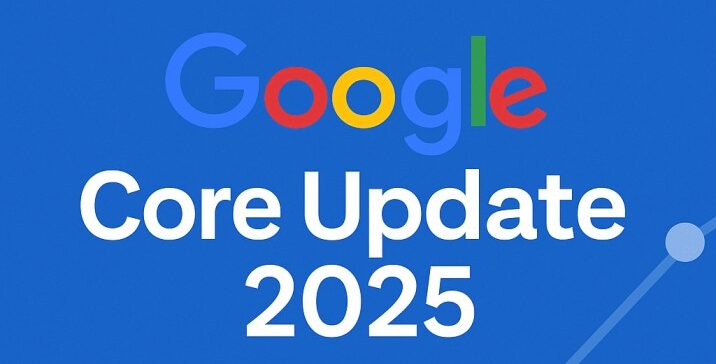When your site traffic drops or surges, the instinctive first step for many SEOs is to open Ahrefs. Known for its robust keyword tracking and backlink analysis, Ahrefs also estimates your organic traffic. But when Google releases a core update, how does Ahrefs respond? Does it show the impact clearly? Can you trust the numbers? This article breaks down exactly how Ahrefs reflects Google core update 2025, what you can—and can’t—conclude from the data, and how to use Ahrefs responsibly during periods of SERP turbulence.
Table of Contents
- Ahrefs Doesn’t Create Updates—It Reflects Them
- How Ahrefs Calculates Organic Traffic
- No Core Update Annotations in Ahrefs
- Google Core Update 2025 – What You Should Know
- Google Core Update 2025 ( June )– Key Insights
- Lag Time: Ahrefs Is Fast, but Not Instant
- How to Analyze Google Core Update 2025 Impact Using Ahrefs
- Ahrefs ≠ Google Analytics or Search Console
- Recommended Tools to Use Alongside Ahrefs
- Google Core Update 2025: Final Thoughts
Ahrefs Doesn’t Create Updates—It Reflects Them
Let’s be clear: Ahrefs does not launch algorithm changes. It is not Google. What Ahrefs does is monitor your site’s keyword positions, compare them against estimated search volumes, and calculate traffic projections based on how visible your pages are in search results.
So when Google rolls out a core update and your rankings shift—up, down, or sideways—Ahrefs adjusts your estimated organic traffic accordingly. But here’s the key: Ahrefs won’t explain why things changed. It reflects the effects of the update—it doesn’t analyze them for you.
How Ahrefs Calculates Organic Traffic
Ahrefs’ traffic estimates are built on this simple formula:
Traffic Estimate = Search Volume × CTR Based on Your Ranking
If your site ranks #1 for a high-volume keyword, Ahrefs assumes you’ll get the lion’s share of the clicks. If you fall to position #8 after a core update, the expected traffic drops—and so do your graphs in Ahrefs.
This estimation model is powerful, but it also means Ahrefs traffic can appear to drop even if your real-world traffic doesn’t—especially if the update reshuffles SERP layouts, rich results, or cannibalizes intent.
No Core Update Annotations in Ahrefs
Unlike tools like SEMrush, Sistrix, or RankRanger, Ahrefs does not annotate core updates on its traffic graphs. So when you see a sharp drop or sudden climb in your traffic chart, there’s no visual indicator that says: “This happened during the March 2024 Core Update.”
To understand if a core update is the cause, you’ll need to manually check the timing:
- Visit Google’s official Search Status Dashboard
- Follow industry sources like Search Engine Roundtable
- Use volatility trackers like MozCast or SEMrush Sensor ( check tools comparison )
Google Core Update 2025 – What You Should Know
Based on confirmed rollout dates from Google’s Search Status Dashboard and Search Engine Land analysis:
| Update Name | Rollout Start | Rollout End | Key Notes |
|---|---|---|---|
| March 2025 Core Update | March 13, 2025 | March 27, 2025 | ~14 days; broad ranking shifts observed |
| June 2025 Core Update | June 30, 2025 | July 17, 2025 | ~16.5 days; some sites saw partial recovery from prior update, then volatility mid-July |
You may spot ranking shifts or traffic fluctuations in Ahrefs within days after these update windows.
👉 These updates can drastically change rankings, which then reflects in Ahrefs as either a traffic surge or a nosedive—even if your actual clicks don’t change yet.
Google Core Update 2025 ( June )– Key Insights
- Google officially rolled out the June 2025 core update on June 30, 2025, marking its second core update this year following the March rollout.
- This update was designed to improve the quality of search results by reassessing content across the web, with ranking changes based on relevance, authority, and overall usefulness—not penalties.
- Sites that experienced traffic loss are not being penalized, but rather may have been outperformed by more relevant or higher-quality content.
- Google emphasized that content recovery may only happen after future core updates, as these improvements are systemic and not instant.
- SEOs and webmasters are encouraged to focus on long-term content quality improvements rather than quick fixes, particularly around originality, expertise, user experience, and topical authority.
- Google did not announce specific niche targets, but volatility was observed in sectors like health, finance, AI-generated content, and affiliate-heavy pages.
- The update was fully rolled out by July 17, 2025, lasting approximately 17 days.
Lag Time: Ahrefs Is Fast, but Not Instant
Ahrefs updates its data frequently, but not in real time. Depending on the keyword difficulty, search volume, and region, some keywords might refresh daily, others weekly. This means:
You might see the effects of a Google update in Ahrefs a few days after it actually happened.
This delay isn’t a flaw—it’s a reflection of crawl cycles and SERP data updates. But it’s important to keep it in mind when matching changes to update timelines.
How to Analyze Google Core Update 2025 Impact Using Ahrefs
Ahrefs can’t tell you why rankings changed, but it’s still a powerful way to analyze what changed. Here’s how:
1. Check the Organic Traffic Chart
In Site Explorer, look for noticeable drops or spikes around known core update dates.
2. Compare “Top Pages” Before and After
Use the date filter in the Top Pages report to see which pages gained or lost estimated traffic.
3. Review Keyword Movements
Under Organic Keywords, filter by position changes and match to search volume. This shows you where losses or gains actually came from.
4. Benchmark Against Competitors
Enter competitor domains to see if similar movements happened across the niche—if yes, a core update is likely responsible.
Ahrefs ≠ Google Analytics or Search Console
One of the biggest misconceptions: Ahrefs data is not your actual traffic.
- It doesn’t measure real user visits
- It doesn’t pull data from your site
- It doesn’t connect to your Google Analytics
Ahrefs estimates traffic based on keyword rankings and search volume. It’s best used for trend comparison, keyword loss analysis, and SEO forecasting—but it should always be paired with Google Search Console or GA4 for full accuracy.
Recommended Tools to Use Alongside Ahrefs
| Tool | Use Case |
|---|---|
| Google Search Console | Real search impressions & clicks |
| Google Analytics | Behavioral data and traffic confirmation |
| SEMrush Sensor | Volatility tracker for algorithm updates |
| MozCast | Daily temperature of Google SERPs |
| SERoundtable | Community insights during algorithm chaos |
| Sistrix / RankRanger | Core update annotations on traffic graphs |
Google Core Update 2025: Final Thoughts
Ahrefs is one of the best tools available for tracking your SEO visibility and keyword performance—but it’s not a core update detector. Instead, it reflects the changes caused by updates and gives you the tools to interpret them.
Here’s how to use it effectively during c:
- Don’t panic at a sudden drop—compare against multiple tools
- Validate traffic changes with GSC or Analytics
- Look at ranking changes, not just traffic estimates
- Always cross-reference timing with known Google updates
Used this way, Ahrefs becomes less of a mystery—and more of a strategic lens for understanding how Google core update 2025 shape your SEO reality.

Andrej Fedek is the creator and the one-person owner of two blogs: InterCool Studio and CareersMomentum. As an experienced marketer, he is driven by turning leads into customers with White Hat SEO techniques. Besides being a boss, he is a real team player with a great sense of equality.
